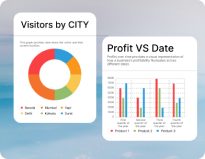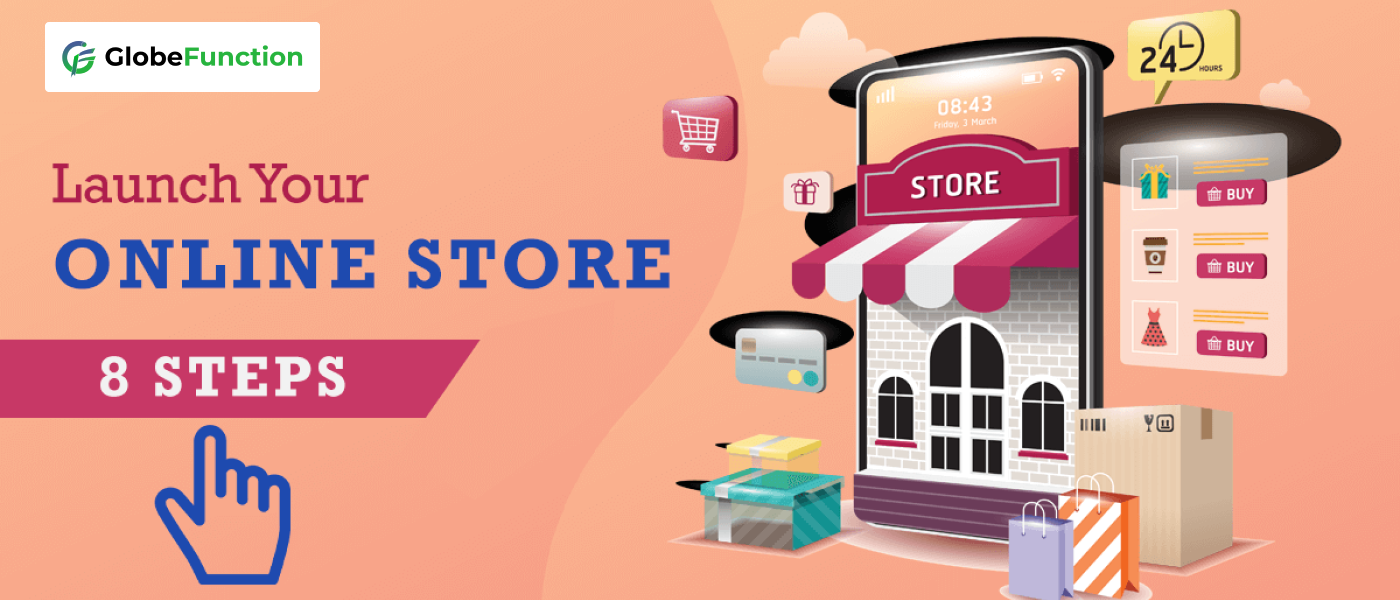You can start a dropshipping or online business, or sell your own handcrafted goods, but in order to succeed online, you’ll need a fantastic website with eCommerce features. It’s easier than ever to launch an eCommerce business with comparatively low startup costs and a plethora of excellent website builders accessible in India. We’ll walk you through the process of opening an online store in just eight simple steps in this article. Realize your aspirations for an eCommerce business right now!
1. Determine Your Target Audience and Choose a Profitable Niche
Choosing a niche market to target is the first step in launching an online store. Ignoring the three factors when selecting a niche is one of the biggest mistakes made by new business owners:
- Profitability: In order to see a return on your investment and create a successful online store, you want to target a profitable niche. A product has little chance of making a profit if it is too costly to produce or buy in bulk. In a similar vein, a product might be more appropriate for in-person sales if shipping would be too costly.
- Searchability: The top online retailers carry popular items that customers look for. Make sure “beauty blender” is a keyword you target if, for example, you want to launch an online store selling beauty blenders. Utilize SEO tools to find out what products people are looking for.
- Passion: Think about your inclinations. What, for instance, do you like to discuss or look into? When you are enthusiastic about your product, you are more likely to persevere through difficult times. Furthermore, you want people to come to your store because you are the authority in a specific industry, category of goods or services
Your niche is not as important as your target audience. You want to ensure that they will find your products interesting and that they will have no trouble making a purchase. Asking someone who is not in your target market for their opinion on your product is a bad idea.
2. Select a Product Category
It’s time to choose your product or service line after you’ve identified your target market and niche. Starting an online store can be difficult, but this is the hardest part. Make sure you’re not selling something that no one is looking for or that would be too expensive to produce. It’s crucial to confirm that you have the means, including transportation and storage, to handle your merchandise.
How will you set your product apart from the competition if you decide on an already well-liked product? Is it possible to enhance a current product? How are you going to guarantee that your web store is the preferred place to buy this product?
3. Produce Your Own Assets and Brand Name
Choosing a brand or company name and creating brand assets, like a logo, come next after you decide what you want to sell. This step may come very easily to some people and very difficultly to others. Businesses can filter through potential names by visiting registrars of domain names, like GoDaddy, and looking for available domains. The rationale is that, ideally, your domain name should correspond with the name of your company.
If you’re not sure where to start when designing your logo, Canva is a fantastic resource. It provides you with dozens of easily navigable, free, personalized logo templates. Should you decide against trying your hand at logo design, you can always hire experts from sites like 99Designs and Fiverr to do it for you.
4. File for Business Registration
An employer identity number (EIN) is required in order to handle payments for your online store. You must register your online store as a business in your state in order to obtain an EIN. Small businesses typically register as limited liability companies (LLCs), which help protect your personal assets in the event that your company is sued, though you can register as a corporation or sole proprietorship as well.
Consult your tax advisor to determine whether forming an LLC is the best course of action for your new business as there are tax benefits as well. It is best to contact your state’s Secretary of State for more specific information on the business registration process, as it varies from state to state. If not, you can always use AKM Global or ZenBusiness, two services that assist with business registration.
5. Select an Online Retailer
Selecting an e-commerce platform comes next. You will create and run your online store on this platform. There are several excellent e-commerce platforms available, including Squarespace, Shopify, and Square. But, every platform has a different set of features that affect its affordability, functionality, and user-friendliness, so it’s important to take your time in selecting the best one for you.
The following are some of the top e-commerce platforms that make it simple to create an online store:
Squarespace: The best option for inexperienced web designers looking to quickly and affordably create a stunning online store with integrated marketing capabilities for as little as INR 1,165 per month when paying yearly.
Top e-commerce platform for creating a online store is GlobeFunction. Plans begin at INR 599 per month and usually entail paying approximately INR 20,806 for the purchase of a premium theme.
Square: This platform is ideal for individuals on a tight budget, as it provides free plans for both in-person and online sales.
See the top e-commerce platforms for additional details and guidance in selecting the best one for your online store.
6. Build Your E-commerce Website
After determining which e-commerce platform to use, the following action is to visit that platform, register, and start setting up your online store. Generally, the steps will entail the following, though they may differ based on the platform you’re using.
How to create a website for an online store:
- Go to your preferred e-commerce site (such as Square) and register for an account.
- Select a domain name, which is usually included in a plan; if not, buy it separately.
- Choose a theme or template.
- Include your company name and logo.
- Personalize every web page, including your homepage.
- Make product listings and add your products.
- Install a processor for payments.
- Install a processor for payments.
- Set up the settings (such as the shipping or tax calculators).
- Follow our thorough, step-by-step instructions to learn how to create an e-commerce website.
7. Make Your Website Better
After your online store launches, make sure it is search engine optimized so that it can be found online and by search engines like Google. This will improve the visibility of your website, attract more visitors, and increase sales—all for free.
The following are some actions you can take to improve your website:
- The text that shows up on search engine results pages (SERPs) is known as the title tag. Your product or service’s title tag needs to be informative and pertinent.
- Meta descriptions: The text that shows up in the SERPs beneath your title tag is known as the meta description. Make use of captivating and informative language to entice readers to visit your website.
- H tags: Your page’s headings are contained within the H tags. Make sure they serve to clarify the topic of the page and are descriptive.
- Pictures: Add pictures to your page and make sure they have the appropriate keyword tags applied.
8. Speak Up for Everyone
Once your online store is operational, you must market it so that everyone knows about it. This is because using SEO to build a business is an important part of your long-term plan. Currently, promoting your goods and services will aid in increasing traffic.
Here are a few strategies for advertising your web store:
- List your company in internet directories.
- Collaborate with influencers to market your company.
- internet advertising (like Facebook or Google Ads, for example).
- For your website to be found online, use content marketing.
- Make accounts on social media and use them frequently.
- loyalty or referral schemes.
- Use press releases (if your products are extremely innovative or one-of-a-kind).
- Enroll in a program for affiliate marketing.
- Utilize word-of-mouth advertising.
The best strategy for promoting your online store will vary depending on the nature of your company and the goods or services you offer. Promising advertising campaigns incorporate most of these tactics simultaneously, if not all of them. Try a few different approaches to determine which ones suit you the best.
The Significance of E-Commerce
Our world is easier to access and connect to than it has ever been, which is why the current generation is often referred to as the “instant gratification generation.” As long as you have an online website, individuals from all over the world can buy your goods and services with a few clicks, 24/7/365. This is also known as an online store at times. A sale can be made or lost based on your website’s overall design, speed, and quality.
Frequently Asked Questions (FAQs)
Planning entails determining your niche, studying the competition, and performing market research.
Make sure your titles are clear, include pertinent keywords, and update your content frequently.
Establishing a solid rapport with your audience promotes loyalty to your brand and trust.
By matching your passion to market demand, you can identify a niche that will help you create a distinctive and profitable online store.
A memorable brand makes your business stand out and encourages patronage.
Social media increases engagement and broadens your brand’s reach by creating a community around it.
Keep an eye on analytics to stay up to date on user behavior and make data-driven decisions that will propel your business forward.
Investigate cutting-edge technologies to improve your online store, such as chatbots and augmented reality.














